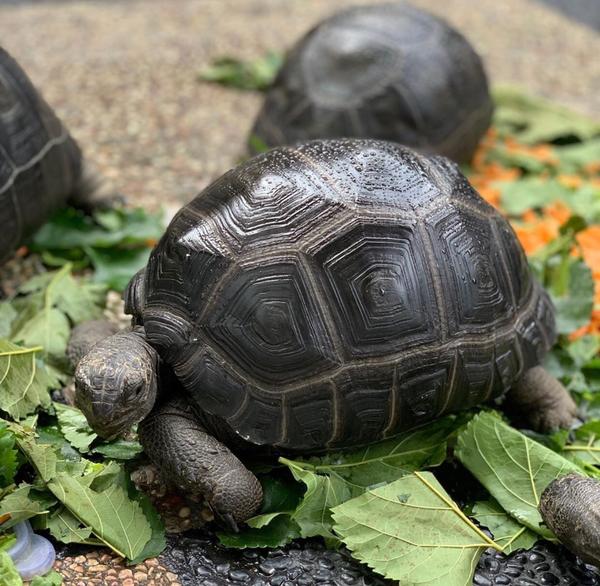Exploring the Unique Charm of Astrochelys yniphora: A Guide for Prospective Owners
Astrochelys yniphora, more typically called the Madagascar radiated tortoise, is a fascinating types indigenous to the forests and grasslands of Madagascar. Its spectacular shell, defined by a striking pattern of star-like lines, lends this tortoise its alternative name. However, beyond its aesthetic appeal lies a myriad of considerations for those contemplating the journey of ownership. This short article aims to look into the features of Astrochelys yniphora and offer potential owners with essential insights as they browse the process of getting among these remarkable reptiles.
Understanding Astrochelys yniphora
Habitat and Natural History
Astrochelys yniphora is mostly discovered in the southern regions of Madagascar. It grows in dry forest habitats and open savannas, where it forages on a wide array of greenery. The types is particularly kept in mind for its slow growth rate and long life expectancy, typically surpassing 50 years in captivity when given proper care.
Physical Characteristics
The defining feature of Astrochelys yniphora is its iconic shell, embellished with intricate yellow and black patterns. These markings contribute to its category as a "radiated" tortoise. Adult specimens can mature to 24 inches in length and weigh in between 30 to 50 pounds. Their robust bodies and strong limbs make them appropriate for their natural habitat, however it likewise requires due diligence from their owners when considering their care requirements.
Behavior and Temperament
These tortoises are generally known for their peaceful demeanor. While shy, they can show curious behavior, especially when they end up being accustomed to their environment and caretakers. They thrive finest in large enclosures with the chance for exploration, and it is important to provide proper stimuli to keep them engaged.
The Reality of Ownership
For those enchanted by the charm of Astrochelys yniphora, purchasing one is a considerable dedication. Prospective owners should approach this choice with a clear understanding of the obligations involved.
Legal Considerations
Before considering obtaining an Astrochelys yniphora, it is important to understand the legalities surrounding their sale and ownership. Due to the face of ongoing threats to their population-- that include habitat loss and poaching-- this species is safeguarded under the Convention on International Trade in Endangered Species (CITES). For that reason, acquiring a tortoise should be done through accountable breeders or reputable sources that abide by all legal requirements.
Care Requirements
Owning a Madagascar radiated tortoise requires knowledge and commitment. Understanding their habitat, dietary requirements, and social psychology is essential for ensuring their longevity.
Fundamental Care Guidelines
- Habitat: A large outside enclosure is perfect, as these tortoises require adequate area to stroll and check out. Indoor setups ought to also reproduce their natural surroundings as closely as possible, including UVB lighting and a substrate that permits natural habits.
- Diet plan: A diverse diet plan is necessary for the health of Astrochelys yniphora. Their diet plan must consist mostly of lawn, leafy greens, and some fruits. Prevent high-protein feeds, which can lead to shell deformities.
- Temperature and Humidity: These tortoises require a basking area with temperatures in between 80-90 ° F and a cooler location where they can pull back. Humidity levels ought to be preserved around 40-60%.
- Health Monitoring: Regular veterinary checks are vital. Owners need to be watchful about signs of health problem, such as lethargy, absence of cravings, or changes in fecal output.
- Social Needs: While normally singular, juvenile tortoises can coexist; however, care must be required to keep track of interactions to avoid aggressiveness or tension.
Cost of Ownership
Getting an Astrochelys yniphora is not just a financial investment at the point of purchase. Prospective owners must be prepared for continuous expenses associated with habitat setup, food, veterinary care, and basic maintenance. Preliminary expenses can range from ₤ 1,000 to ₤ 3,000, however ongoing yearly costs can likewise be significant.
FAQs about Astrochelys yniphora for Sale
Q1: Can I keep Astrochelys yniphora in a fish tank?A1: While young tortoises can be housed in a big aquarium temporarily, they ultimately need a bigger outside enclosure to accommodate their growth and natural behavior.
Q2: Are Madagascar radiated tortoises good animals for kids?A2: They can be suitable pets for older kids, offered responsible guidance from grownups. Their care requires day-to-day attention, and they are slow-moving creatures that require a gentle touch.
Q3: Where can I fairly purchase an Astrochelys yniphora?A3: It is vital to buy from licensed breeders who adhere to CITES guidelines. Zoos or reptile shows might also supply choices for obtaining these tortoises morally.
Q4: Are there any health concerns I should be mindful of?A4: Common health concerns for Astrochelys yniphora consist of breathing infections and shell defects resulting from improper diet plan and environment conditions. Routine vet check-ups can assist reduce these risks.
Q5: How long do Astrochelys yniphora live?A5: With correct care, Madagascar radiated tortoises can live for 50 years or longer, making them a long-term dedication.
In Conclusion
Owning an Astrochelys yniphora is a rewarding yet demanding duty. Their remarkable look and mild nature make them a special option for reptile lovers. Nevertheless, Albino tortoise for sale must approach ownership knowledgeably, guaranteeing they can satisfy their requirements and offer an appropriate habitat for these stunning creatures. By doing so, they can take pleasure in the long-term friendship of among Madagascar's the majority of endangered and fascinating homeowners.

